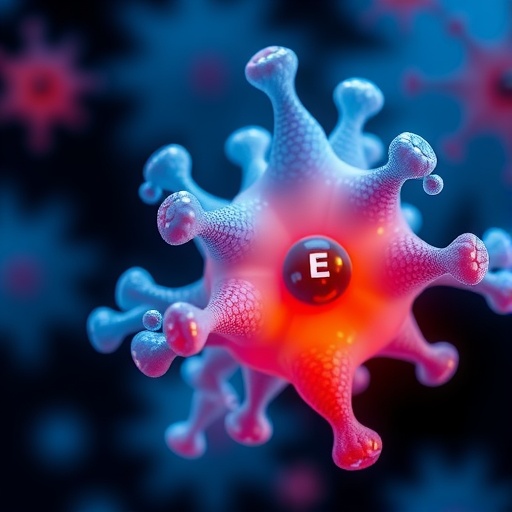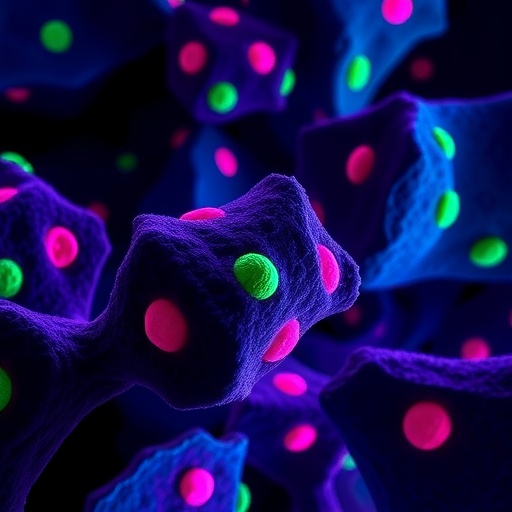In the intricate biochemical milieu of cellular metabolism, the orchestration of molecular pathways ensures the precise synthesis, recycling, and regulation of essential biomolecules. Among these, folate metabolism stands out as a critical nexus, delivering crucial one-carbon units necessary for synthesizing nucleotides that form DNA, RNA, and amino acids. Disruptions to this finely balanced system, whether through genetic anomalies or nutritional deficiencies, have far-reaching consequences, manifesting in developmental disorders and oncogenic processes. Recent research emerging from CeMM, the Research Center for Molecular Medicine of the Austrian Academy of Sciences, in concert with collaborators from the University of Oxford, unveils a surprising regulatory dimension in purine biosynthesis: the enzyme NUDT5 acting beyond its canonical catalytic capacity.
Traditionally recognized for its enzymatic function, NUDT5 belongs to the Nudix hydrolase family responsible for hydrolyzing nucleotide derivatives and mitigating potentially harmful nucleotide accumulations. However, the groundbreaking study published in the esteemed journal Science reveals that NUDT5 exerts a non-enzymatic, scaffolding role in moderating purine synthesis. Rather than catalyzing nucleotide hydrolysis, this protein physically interfaces with PPAT, the enzyme catalyzing the rate-limiting initial step of the de novo purine pathway, thereby imposing a structural constraint that curtails excessive purine production when intracellular purine levels rise.
Purines, fundamental components of nucleic acids, not only serve as genetic material constituents but also participate in energy transactions and cellular signaling. The biosynthetic demand for purines must be meticulously regulated to conserve energy and maintain cellular homeostasis. Cells employ both salvage pathways and de novo synthesis routes, the latter being highly resource-intensive and tightly subject to feedback inhibition. This new insight into the NUDT5-PPAT interaction elucidates a novel layer of metabolic regulation, highlighting a protein’s role beyond catalytic activity to one of structural governance.
The investigative strategy applied by the researchers involved dissecting the metabolic crosstalk in cells harboring mutations in MTHFD1, a pivotal enzyme in folate metabolism. Given that the folate cycle furnishes indispensable one-carbon units for nucleotide biosynthesis, alterations in MTHFD1 equivalently dysregulate purine synthesis, underscoring the importance of understanding compensatory and inhibitory mechanisms. Employing sophisticated genetic screens, metabolomic profiling, and chemical biology tools enabled the team to pinpoint NUDT5 as a critical node that adjusts purine biosynthesis through direct interaction rather than enzymatic conversion.
One of the study’s most compelling revelations is that the regulatory function of NUDT5 persists independently of its nucleotide-hydrolyzing activity. Chemical inhibitors targeting NUDT5’s active site and genetic mutations that abolished its catalytic function did not disrupt the protein’s capacity to bind and inhibit PPAT. Only the complete ablation of the NUDT5 protein, either through genetic knockout models or via a novel chemical degrader named dNUDT5, effectively dismantled this feedback control, leading to unchecked purine synthesis.
This non-canonical role of NUDT5 underscores an emerging paradigm in enzymology and cellular regulation: enzymes can influence metabolic fluxes through structural and scaffolding actions aside from their catalytic functions. This discovery expands our understanding of protein multifunctionality within metabolic networks and reveals intricate regulatory tapestries beyond classical enzymatic activity.
The implications of this regulatory mechanism extend profoundly into cancer biology and therapeutic development. Chemotherapeutic agents like 6-thioguanine function by mimicking purine analogs, thereby interfering with DNA synthesis and promoting cytotoxicity in rapidly dividing tumor cells. The study demonstrated that cells lacking the NUDT5-PPAT interaction showcased reduced sensitivity to such treatments, implying that loss-of-function mutations or alterations in NUDT5 may underpin certain forms of chemoresistance. These findings were buttressed by complementary research from Ralph DeBerardinis’ group, affirming the central role of NUDT5 in modulating anticancer drug efficacy.
Furthermore, the research bridges critical knowledge gaps linking folate metabolism, purine biosynthesis, and rare genetic diseases. MTHFD1 deficiency, characterized by immune dysfunction and developmental neurological impairments, can now be better understood through the lens of deregulated purine synthesis. Comprehending the suppressive scaffolding role of NUDT5 enriches our conceptual framework for developing novel therapeutic strategies targeting metabolic dysregulation in such disorders.
Technological innovation also featured prominently in this work, notably with the creation of dNUDT5, a chemical degrader engineered by the Oxford team. This targeted molecular tool facilitates selective depletion of NUDT5 in living cells, providing researchers an unprecedented ability to probe the spatial and temporal dynamics of purine regulation. Beyond basic research, dNUDT5 holds promise for future clinical applications aimed at mitigating chemotherapy side effects by selectively modulating purine metabolism in healthy versus cancerous tissues.
This study exemplifies the intricacies of molecular biology where protein structure and physical interactions orchestrate complex metabolic outcomes. “NUDT5 epitomizes how an enzyme’s physical presence can dictate cellular fate,” states Stefan Kubicek, principal investigator at CeMM. Such insights have transformative potential, encouraging a reevaluation of protein functions traditionally attributed solely to catalytic activities, ushering in new vistas in metabolic engineering and precision medicine.
The elucidation of NUDT5’s scaffolding role presents a conceptual leap in understanding metabolic control mechanisms. It challenges the classical dogma of enzyme functionality, highlighting the necessity to investigate protein-protein interactions and structural roles within metabolic pathways comprehensively. This paradigm shift not only enriches biochemical theory but also catalyzes innovative therapeutic approaches by exploiting protein multifunctionality.
In conclusion, this research provides a vivid testament to the complexity and sophistication of cellular metabolic regulation. It reveals an unanticipated dimension where NUDT5, by assuming a structural role, serves as a molecular sentinel that restrains purine synthesis, safeguarding cellular equilibrium. Such discoveries pave the pathway for targeted cancer therapies and interventions for metabolic disorders, bolstered by a deeper grasp of enzyme versatility and metabolic network dynamics.
Subject of Research: Cells
Article Title: A non-enzymatic role of Nudix hydrolase 5 in repressing purine de novo synthesis
News Publication Date: 6-Nov-2025
Web References: DOI: 10.1126/science.adv4257
Image Credits: Alphafold interaction prediction between NUDT5 dimers (red) and PPAT tetramer (blue) © Tuan-Anh Nguyen
Keywords: Metabolic regulation, DNA synthesis, Enzymatic activity
Tags: biochemical pathways in cellular metabolismcellular metabolism and health implicationsdevelopmental disorders from metabolic disruptionsenzyme NUDT5folate metabolism significancenon-enzymatic roles of enzymesnucleotide synthesis and regulationNudix hydrolase family functionsoncogenic processes related to metabolismpurine biosynthesis regulationresearch on enzyme functionsstructural constraints in biochemistry





